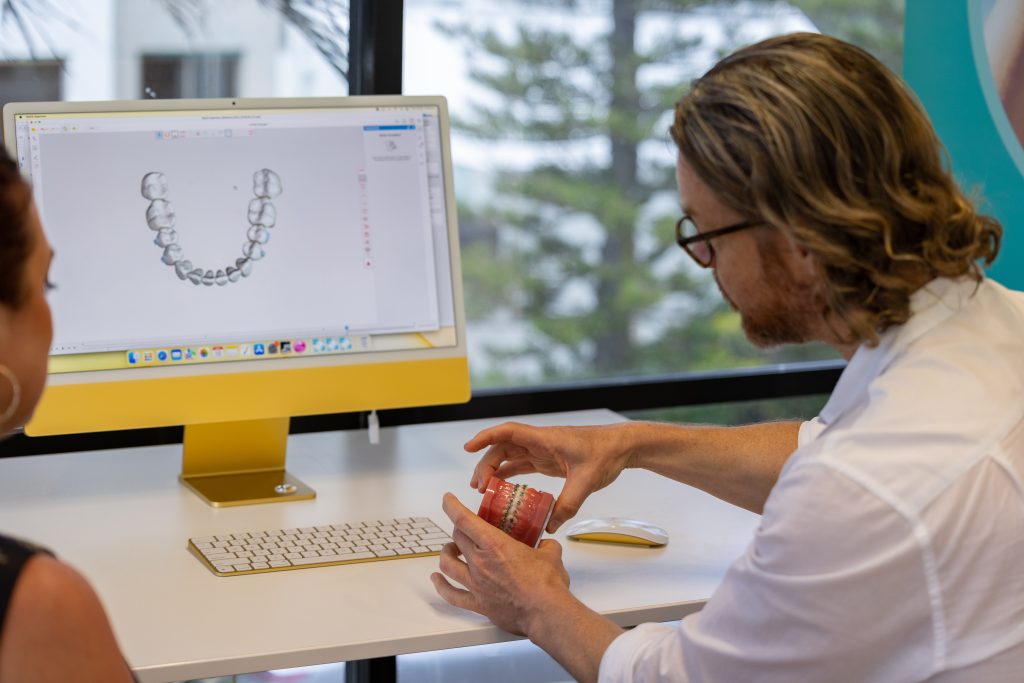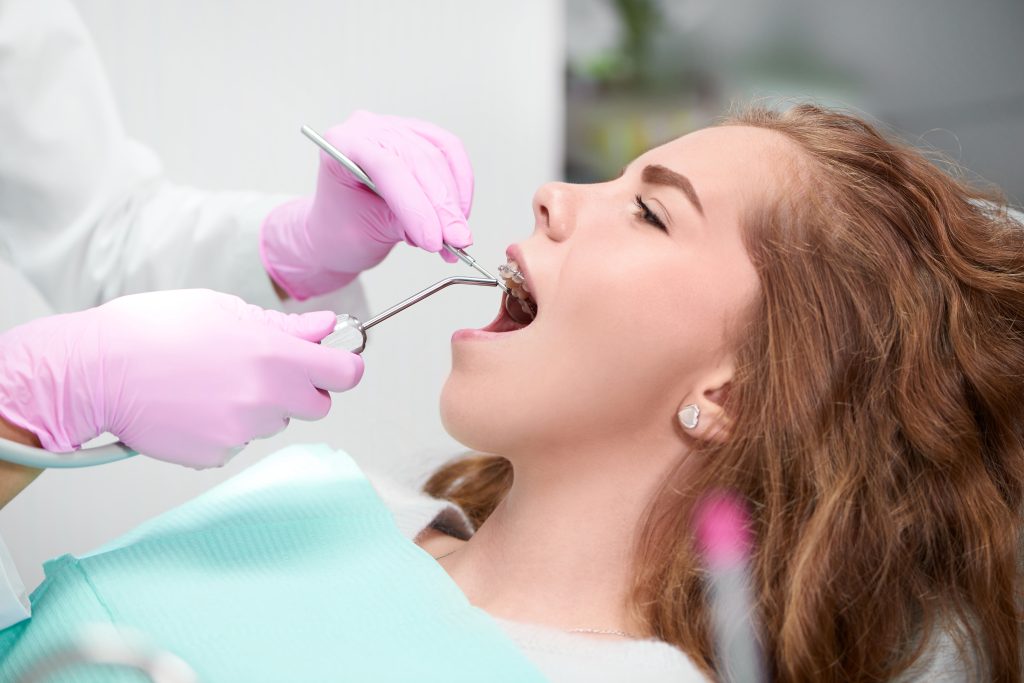


Conventional Braces
Symmetry Orthodontics offers traditional metal braces, coloured braces and ceramic braces. Our team can help you establish which option is best suited to your orthodontic needs.
Conventional braces are devices used in orthodontics that align and straighten teeth and help to position them with regard to a person’s bite, while also working to improve dental health. They are often used to correct underbites, as well as malocclusions, overbites, cross bites, open bites, deep bites, crooked teeth, and various other flaws of the teeth and jaw.
Braces can be either cosmetic or structural. Unlike clear aligners, conventional braces are a fixed orthodontic appliance that cannot be removed. Regular appointments are required when making use of this orthodontic treatment option to ensure the efficacy of the braces, and adjustment appointments will be necessary over time to ensure the alignment process provides the expected results.
Enhance Your Smile with Braces
Give our friendly staff a call or make an enquirey online and we can help you learn more about your orthodontic treatment options.
Frequently Asked Questions
These are some of our most frequently asked questions about conventional braces.
Some signs that you or your child may need braces include:
- Upper front teeth protrude excessively over the lower teeth, or are “bucked”
- Upper front teeth cover the majority of the lower teeth when biting together (deep bite)
- Upper front teeth are behind or inside the lower-front teeth (underbite)
- The upper and lower front teeth do not touch when biting together (open bite)
- Crowded or overlapped teeth
- The centre of the upper and lower teeth do not line up
- Finger- or thumb-sucking habits which continue after six or seven years of age
- Difficulty chewing
- Teeth wearing unevenly or excessively
- The lower jaw shifts to one side or the other when biting together (functional shift)
- Spaces between the teeth
The placement of bands and brackets on your teeth does not hurt. Once your braces are placed and connected with the archwires, you may feel some soreness of your teeth for 1 to 4 days.
Your lips and cheeks may need 1 to 2 weeks to get used to the braces on your teeth.
Yes, you should continue to see your general dentist every 6 months for cleanings and dental checkups.
Treatment times vary and depend on three factors
- The patients biology
- The severity of the correction required
- Patient cooperation with instructions ( i.e. breakages, cleaning, and elastic wear).
The average time is 21 months but can range from 12 to 30 months. Actual treatment time can be affected by rate of growth and severity of the correction. Treatment length is also dependent upon patient compliance. Maintaining good oral hygiene and keeping regular appointments are important factors in keeping treatment time on schedule.
No. It is recommended, however, that patients protect their smiles by wearing a mouthguard when participating in any sporting activity.
No. However, there may be an initial period of adjustment. In addition, brace covers can be provided to prevent discomfort if required but are rarely requested.
